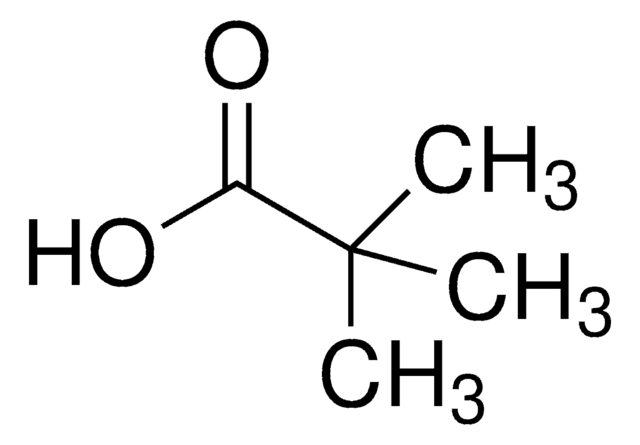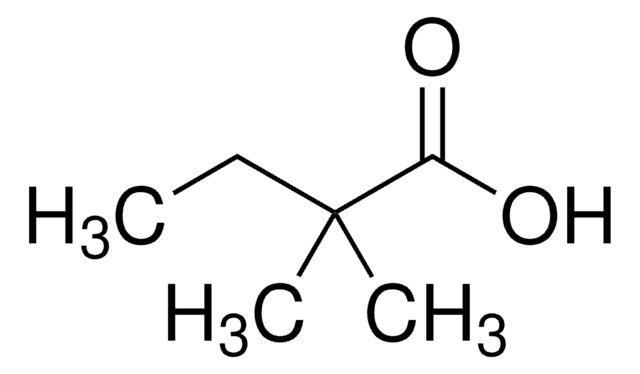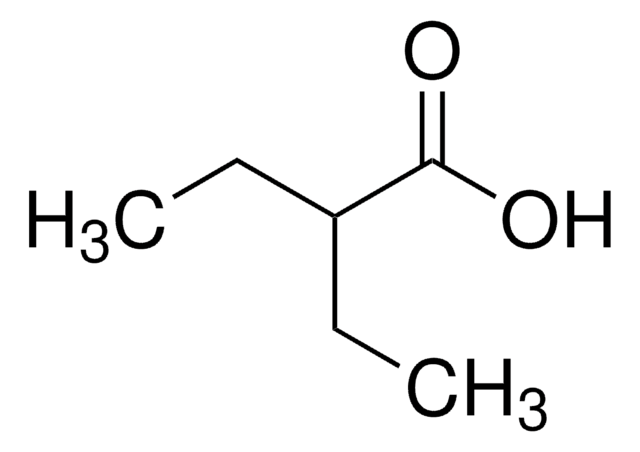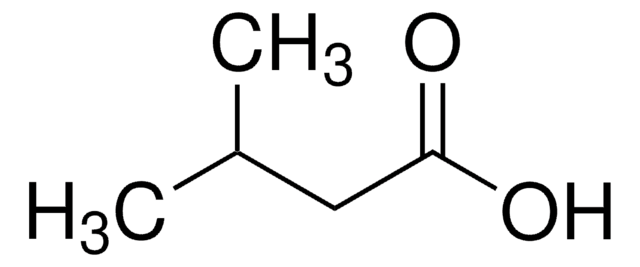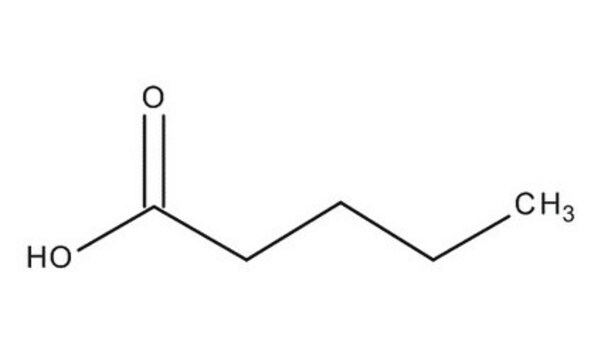8.01336
Pivalic acid
for synthesis
Synonym(s):
Pivalic acid, Neopentanoic acid, 2,2-Dimethylpropionic acid, Trimethylacetic acid
About This Item
Recommended Products
vapor pressure
0.85 hPa ( 20 °C)
Quality Level
form
crystals
potency
900 mg/kg LD50, oral (Rat)
1900 mg/kg LD50, skin (Rat)
expl. lim.
1.6 % (v/v)
mp
32-35 °C
transition temp
flash point 64 °C
solubility
25 g/L
density
0.91 g/cm3 at 20 °C
storage temp.
2-30°C
InChI
1S/C5H10O2/c1-5(2,3)4(6)7/h1-3H3,(H,6,7)
InChI key
IUGYQRQAERSCNH-UHFFFAOYSA-N
Application
- Regiodivergent synthesis involving pivalic acid: A ligand-controlled regiodivergent C-H alkenylation process using pivalic acid, advancing the synthesis of complex indazoles and potentially impacting pharmaceutical compound development (Kim et al., 2017).
- Pivalic acid in radiochemical syntheses: The study utilized pivalic acid derivatives for the synthesis of novel radioiodinated pharmaceuticals for hypoxia imaging, highlighting its utility in diagnostic and therapeutic applications in the medical field (Elsaidi et al., 2019).
- Capillary electrophoretic applications of pivalic acid: Research explored new methods of cationic electrophoretic focusing using pivalic acid for high-sensitivity analysis of water contaminants, providing insights into environmental monitoring techniques (Malá and Gebauer, 2022).
- Cyclative coupling using pivalic acid: Zhuang et al. described a novel cyclative C-H/C-H coupling technique facilitated by pivalic acid, which rapidly constructs complex molecular frameworks like tetralin and chromane, useful in drug discovery and development (Zhuang et al., 2021).
Signal Word
Warning
Hazard Statements
Precautionary Statements
Hazard Classifications
Acute Tox. 4 Oral - Eye Irrit. 2 - Skin Irrit. 2
Storage Class Code
11 - Combustible Solids
WGK
WGK 1
Flash Point(F)
147.2 °F - closed cup
Flash Point(C)
64 °C - closed cup
Certificates of Analysis (COA)
Search for Certificates of Analysis (COA) by entering the products Lot/Batch Number. Lot and Batch Numbers can be found on a product’s label following the words ‘Lot’ or ‘Batch’.
Already Own This Product?
Find documentation for the products that you have recently purchased in the Document Library.
Our team of scientists has experience in all areas of research including Life Science, Material Science, Chemical Synthesis, Chromatography, Analytical and many others.
Contact Technical Service